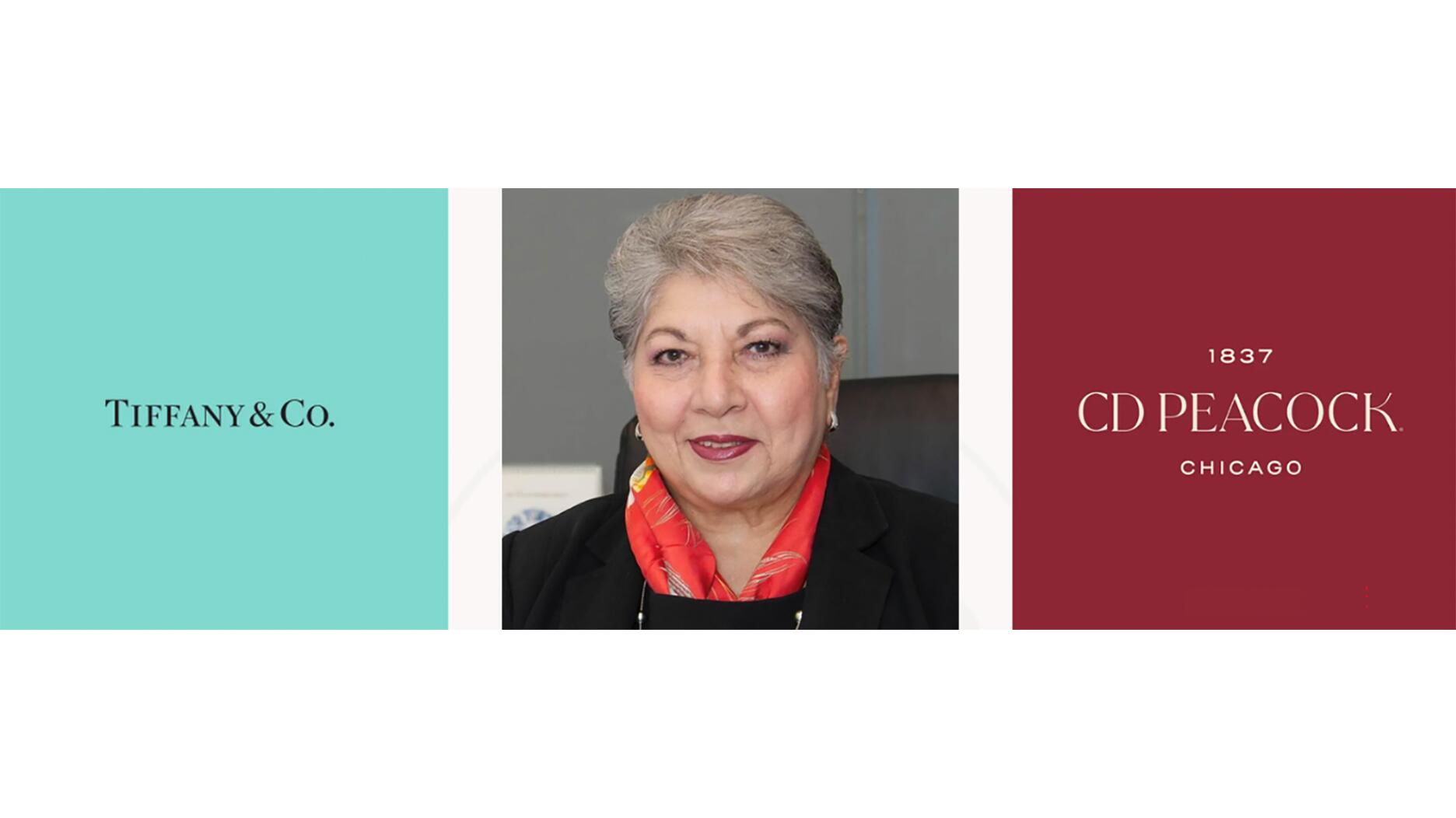The special-edition egg pendant ingested in a New Zealand jewelry store was recovered after a six-day wait.
Live From Tucson: 9 Colored Gemstone Market Updates
Experts run down the list of stones finding new life in the market and reveal which gemstone is the current darling of the trade.

Tucson, Ariz.—Every year, Tucson serves as the perfect backdrop for a market update from Gemworld International on current events, trends and other topics in the colored gemstone sector.
This year, President Richard Drucker and Vice President Stuart Robertson talked about pricing trends, and which stones are enjoying renewed popularity, among other topics.
Here are nine takeaways from their session held Thursday at the AGTA GemFair jewelry trade show.
1. Here’s what is happening in sapphires.
When it comes to the popular gem, blue still leads sales.
Most production of the corundum is now coming from Madagascar, Nigeria, Sri Lanka and Ethiopia, Drucker said.
He said prices for heated material have come down due to oversupply—as mechanized mining puts so much more material in the market—while unheated material is scarce and demand is high, so prices have risen.
2. There’s some old stock coming into the market.
Though aquamarine has always been a staple, one thing Gemworld has noticed, Robertson said, is that for the first time in a long time, old mined material is coming out of the safes and into the market, putting more expensive pieces into play.
He said they expect to see more of that, especially since the supply of good rough leveled off last year along with a dip in some prices; these rare, high-quality stones “resist all that,” he said, so it’s an opportune time to bring them out.
They also are seeing some of the same with rubellite tourmaline.
3. Spinel is having its day.
There’s been plenty of chatter around spinel the past few years, so it’s not surprising Robertson said sales of the gemstone have been strong recently, especially when it comes to unusual colors like gunmetal gray, which offer a unique look at an affordable price point.
This follows the trend, he said, of unusual stones—special stones within an already known variety—gaining in popularity.
Much of this is coming from younger designers who are looking for something different.
4. Australian opals are the benchmark.
One of the main drivers for the opal market over the years has been that the Ethiopian material expanded the base and the knowledge of opal, Robertson said.
But as the stability of the material became a concern, Australia re-emerged as the “benchmark for quality” in opals.
He added that they’re seeing more in the U.S. shows and prices for the gemstones have risen again.
5.
There aren’t a lot of Burmese rubies on the market anymore, and prices for the larger, finer stones have skyrocketed.
Where they are seeing strength in the market is for East African rubies.
Prices for the heated rubies, Robertson said, have gone down because there’s so much supply. Ruby used to account for only about 20 percent of the corundum category, but that’s gotten closer to 50 percent or more in recent years.
“The demand is probably not going to support the level of production coming into the marketplace out of Mozambique and other places in the last few years,” he said.
Mozambique is, in fact, the dominant producer of ruby today, but where prices had gone up dramatically, they’ve started softening within the last few years as the market makes a correction.
6. And here’s what’s happening in popular greens.
Tsavorite prices also have come down, so Gemworld expects it to be one of the stronger sellers in green, and in garnets in general.
However, there’s not a lot of production now, especially as Tanzania continues to more closely regulate its mining sector.
The emerald market, meanwhile, has seen a fair amount of change.
While the Ethiopian material offered a lot of promise, Robertson said it was difficult to figure out its positioning in the marketplace.
Now, the main source seems to be Zambia, where production is good and yields decent green stones.
The issue that really continues to affect the emerald marketplace, he said, is enhancements.
“Every time there is some understanding of enhancements at the retail level and with the consumers, the producers start coming up with new narrative or new nomenclature, and it really confuses things,” Robertson said.
7. Garnets are currently the “trade darling.”
More designers are using garnets, especially in alternate colors like the purples that have popped up recently. And even though prices have risen, garnets continue to offer affordable color alternatives to a number of gems.
Robertson said they expect garnets to have a strong run this year.
8. Zircons offer similar advantages.
There’s more interest in zircon again because of its affordability, according to Gemworld, and that interest is extending beyond blue to include the earth tones.
9. Some labs have changed their alexandrite labeling.
According to Drucker, some labs are now listing any color-change chrysoberyl as alexandrite, which is
confusing some dealers when it comes to pricing.
The Latest

Associate Editor Natalie Francisco plays favorites with Piece of the Week, selecting a standout piece of jewelry from each month of 2025.

The “Love and Desire” campaign is inspired by the magic that follows when one’s heart leads the way, said the brand.

How Jewelers of America’s 20 Under 40 are leading to ensure a brighter future for the jewelry industry.

Two awardees will receive free tuition for an educational course at the Swiss lab, with flights and lodging included.


Berta de Pablos-Barbier will replace Alexander Lacik at the start of January, two months earlier than expected.

Sotheby’s held its first two jewelry sales at the Breuer building last week, and they totaled nearly $44 million.

Roseco’s 704-page catalog showcases new lab-grown diamonds, findings, tools & more—available in print or interactive digital editions.

Here are six ideas for making more engaging content for Instagram Reels and TikTok, courtesy of Duvall O’Steen and Jen Cullen Williams.

Carlos Jose Hernandez and Joshua Zuazo were sentenced to life without the possibility of parole in the 2024 murder of Hussein “Sam” Murray.

Yood will serve alongside Eduard Stefanescu, the sustainability manager for C.Hafner, a precious metals refiner in Germany.

The New Orleans jeweler is also hosting pop-up jewelry boutiques in New York City and Dallas.

Set in a Tiffany & Co. necklace, it sold for $4.2 million, the highest price and price per carat paid for a Paraíba tourmaline at auction.

The jeweler’s “Deep Freeze” display showcases its iconic jewelry designs frozen in a vintage icebox.

Take luxury gifting to new heights this holiday season with the jeweler’s showstopping 12-carat sphene ring.

This year's theme is “Unveiling the Depths of the Ocean.”

In its annual report, Pinterest noted an increase in searches for brooches, heirloom jewelry, and ‘80s luxury.

Starting Jan. 1, customers can request the service for opal, peridot, and demantoid garnet.

The 111-year-old retailer celebrated the opening of its new location in Salem, New Hampshire, which is its third store in the state.

The new catalog features its most popular chains as well as new styles.

The filmmaker’s personal F.P. Journe “FFC” prototype was the star of Phillips’ recent record-setting watch auction in New York.

The new location in the Design District pays homage to Miami’s Art Deco heritage and its connection to the ocean.

Inflations, tariffs, and politics—including the government shutdown—were among consumers’ top concerns last month.

“Longtime favorite” presenters, as well as first-time speakers, will lead talks and workshops at the annual event in Tucson next year.

Silas Smith of Meridian Metalworks won the challenge with his pendant that blends Australian and American landscapes.

The sale of the 31.68-carat, sunset-hued stone was part of Sotheby’s first series of events and auctions in Abu Dhabi.

Most customers who walk into your store this month have made up their minds. Your job is to validate their choice, Emmanuel Raheb writes.



























